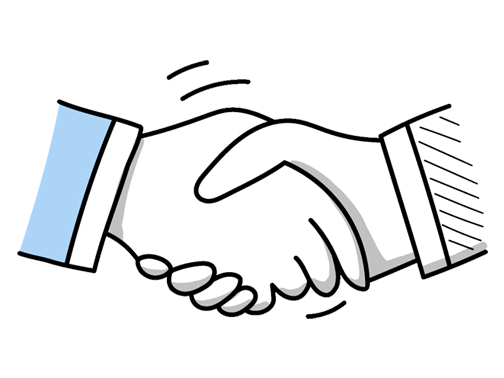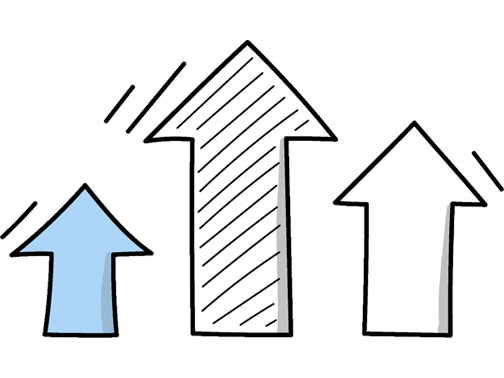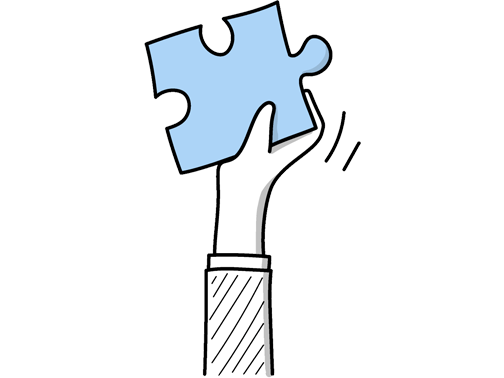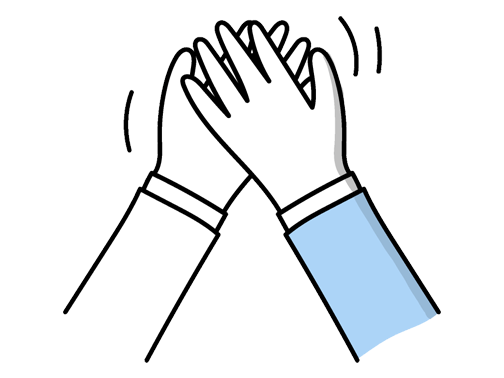Risk Analyst Interview Questions (2025 Guide)
Find out common Risk Analyst questions, how to answer, and tips for your next job interview
Practice Interviews Online - Identify your strengths and weakness in a realistic Risk Analyst mock interview, under 10 minutes
Practice Now »Risk Analyst Interview Questions
This interview question assesses your ability to handle complex information and extract meaningful insights that influence risk management decisions. You need to briefly explain how you organized and analyzed the data using specific tools or methods, then clearly state the important insights you discovered and how they impacted risk assessment or strategy.
Example: In a previous role, I worked with a large dataset combining customer transactions and external market indicators. I cleaned and structured the data using SQL and Excel, then applied correlation analysis to identify patterns linked to credit risk. This helped highlight segments more likely to default, allowing the team to adjust lending criteria and reduce exposure effectively. It was a clear example of turning complex data into practical risk insights.
This question evaluates your technical expertise and decision-making skills in assessing risks effectively. You need to clearly describe the methodologies you use, explain why they are appropriate for the risk type, and give a brief example of how applying these methods impacted a past project’s outcome.
Example: In my experience, I often use methods like Monte Carlo simulations and sensitivity analysis to quantify risk because they provide a clear picture of potential outcomes and their probabilities. For example, while assessing financial risk for a previous employer, running these simulations helped us understand exposure under varying market conditions, supporting more informed decision-making. Choosing the right approach always depends on data availability and the specific risk context.
This interview question is designed to assess your critical thinking and decision-making skills when faced with uncertainty. You need to explain that you gather additional data, evaluate the credibility of sources, and prioritize information to make an informed risk assessment.
Example: When faced with conflicting information about a risk, I take a step back to verify sources and seek additional data to clarify uncertainties. I also consult with colleagues to get different perspectives. For example, in a past project, cross-checking reports helped us avoid making decisions based on incomplete information, ultimately leading to a more accurate risk assessment. It’s about staying thorough and open-minded.
What they want to know is how you effectively manage competing demands to ensure critical risks are addressed on time. You need to explain that you assess tasks by urgency and impact, plan your schedule accordingly, and keep stakeholders informed about your progress and any potential delays.
Example: When juggling multiple deadlines, I start by evaluating which tasks have the most immediate impact, then break them down into manageable steps. I keep open communication with stakeholders to align on priorities and timelines, ensuring expectations are clear. For example, during a project crunch, I focused first on high-risk reports that affected decision-making, while delegating less urgent analyses, making sure everything was delivered on time without compromising quality.
This question assesses your commitment to continuous learning and your ability to apply the latest risk management practices. You should say that you regularly participate in industry events and use current tools, giving examples of how you’ve adapted strategies based on new information.
Example: I make it a priority to keep up with industry trends by regularly reading reports from bodies like the Chartered Institute of Risk Management and attending webinars or workshops. I also stay connected with peers to share insights on new tools. When I learn something valuable, I try to apply it directly, such as using enhanced analytics software to improve our risk assessments at my previous role.
This interview question assesses your understanding of how evolving regulations affect risk strategies and your ability to adapt accordingly. You need to explain relevant frameworks like GDPR or Basel III, describe updating risk assessments in response, and mention proactively communicating changes to senior management.
Example: Regulatory changes shape how we identify and control risks, especially in frameworks like FCA rules or GDPR. Staying ahead means regularly reviewing these updates and adjusting our risk strategies accordingly. For example, when GDPR came in, we enhanced data protection measures and trained teams promptly. Keeping open lines with legal and compliance teams also ensures we communicate impacts clearly, helping the organisation adapt smoothly and maintain resilience.
Questions like this assess your teamwork and communication skills, which are crucial for a risk analyst collaborating with various departments to identify and manage risks. You need to clearly describe the situation, your role, how you contributed to the team’s success, and the positive outcome achieved together.
Example: In my previous role, I collaborated with colleagues to assess potential risks in a new market entry. We each brought different expertise—data analysis, legal, and compliance—and regularly exchanged insights to identify and mitigate key threats. By staying open and communicative, we successfully created a risk framework that helped the company make informed decisions and avoid unexpected pitfalls. It was a clear reminder of how teamwork strengthens outcomes.
What they want to see is your ability to handle uncertainty by using qualitative data and expert input when quantitative data is lacking. In your answer, explain how you would consult subject matter experts, use scenario analysis to estimate the risk, and collaborate with stakeholders to decide on appropriate mitigation steps despite limited data.
Example: If I spot a risk without enough data to measure it precisely, I’d start by gathering insights from subject experts and reviewing similar cases to build a picture. I’d look at qualitative factors to understand potential impacts and discuss this with the team to agree on cautious steps. For example, in a previous project, collaborating with colleagues helped us decide timely controls even before hard numbers were available.
This interview question aims to assess how carefully and systematically you handle data integrity and uncertainty in your risk assessments. You should explain that you verify data accuracy by cross-checking sources, use sensitivity analysis to manage uncertainties, and collaborate with stakeholders to ensure your findings are reliable.
Example: To ensure my risk analysis is reliable, I start by carefully checking the data sources and cross-referencing them where possible. I also quantify uncertainties, using scenario analysis to understand different outcomes. Throughout the process, I keep an open dialogue with relevant teams to validate assumptions and gain fresh insights. This collaborative approach often uncovers blind spots and helps deliver more dependable results.
Questions like this assess your practical expertise with industry-standard tools and your ability to leverage technology in managing risks effectively. You should mention the specific software you’ve used, explain how it helped you identify and mitigate risks, and emphasize your ability to quickly learn new tools as needed.
Example: I’ve worked extensively with tools like RiskWatch and Palisade’s @RISK to analyse and quantify potential risks. Using these platforms, I focus on identifying key vulnerabilities and modelling outcomes to support robust decision-making. I’m comfortable adapting to new software as needed; for example, I recently learned to navigate Power BI for enhanced risk reporting, which improved how my team visualises and communicates risk data.
Interviewers ask this question to see how you manage stress and prioritize tasks under pressure, critical skills for a risk analyst. You need to explain how you stayed calm, prioritized effectively, and methodically addressed key risks, ending with a positive outcome or a lesson learned.
Example: During a tight deadline on a complex risk report, I stayed calm by breaking tasks into smaller steps and prioritising key data. I kept communication clear with the team to address issues quickly. This approach helped us deliver an accurate report on time, and taught me the value of maintaining focus and organisation when things get intense.
This question assesses your ability to apply appropriate statistical methods to interpret risk data effectively. You need to explain methods like regression analysis to identify risk factors, how you use probability distributions to evaluate event likelihood, and mention tools such as Excel or R you use for analysis.
Example: When analyzing risk data, I often use regression analysis and Monte Carlo simulations to identify patterns and predict potential outcomes. I also rely on descriptive statistics to summarize data and highlight anomalies. Interpreting these results helps prioritize risks effectively. Tools like Excel and specialized software such as SAS or R streamline this process, making it easier to produce clear, data-driven insights that guide informed decision-making.
This question helps the interviewer understand your flexibility and problem-solving skills in dynamic situations. You need to describe a specific situation where you adjusted your approach to handle change effectively and the positive outcome that resulted.
Example: Certainly. In my previous role, a sudden regulatory update required us to overhaul our risk assessment framework within a tight deadline. I collaborated with cross-functional teams to quickly understand the changes, adjusted our models accordingly, and ensured compliance without disrupting ongoing projects. This experience taught me the importance of flexibility and clear communication when navigating unexpected shifts.
This interview question aims to show your ability to use data analysis to uncover risks others might miss and how your insights lead to meaningful action. You need to explain how you collected and analyzed data, identified an unusual pattern signaling hidden risk, and describe the positive impact your discovery had on preventing losses or improving controls.
Example: In a previous role, I noticed irregularities while reviewing expense reports that didn’t match usual patterns. By digging into transaction dates and cross-referencing supplier details, I uncovered a recurring billing error that risked financial losses. After highlighting this, the team updated the verification process, preventing further issues and saving the company a significant amount. It was a great example of how careful data review can reveal risks not immediately obvious.
Employers ask this question to see how you analyze real-world risks and your understanding of effective risk management strategies. You need to briefly describe the event, explain the key risks involved, and highlight the steps taken to mitigate those risks and lessons learned.
Example: A recent example that comes to mind is the SolarWinds cyberattack. Organizations quickly identified the breach, assessed the widespread impact, and acted by tightening security protocols and enhancing monitoring systems. This incident highlighted the importance of proactive risk assessment and clear communication across teams, demonstrating how timely responses can help contain complex risks in an interconnected environment. Such experiences remind us that vigilance and collaboration are key in managing emerging threats.
Hiring managers ask this question to see how you identify risks and apply innovative thinking to solve problems effectively. In your answer, clearly describe the risk and its impact, explain the creative solution you used to mitigate it, and highlight the positive, measurable result of your action.
Example: In a previous role, I noticed outdated software increasing cyber risk. Instead of a costly full upgrade, I proposed integrating targeted patches combined with user training. This approach reduced potential breaches by 30% within six months and saved the company significant expense. It was a practical way to manage risk without disrupting daily operations.
What they want to understand is your awareness of industry trends and your ability to adapt to changing risk landscapes. You need to say that the role will evolve with advancements in data analytics and AI, requiring you to integrate technology and maintain a strategic focus on emerging risks.
Example: In the next five years, I see risk analysts playing a more strategic role, blending traditional data analysis with emerging technologies like AI and machine learning. This will help identify risks faster and more accurately. For example, using real-time data to predict market shifts could become standard, enabling businesses to respond proactively rather than reactively. It’s about evolving from number-crunching to insightful decision support.
This question assesses your understanding of key risk categories and their potential effects on a company’s financial health. You need to clearly define types like market, credit, operational, and liquidity risks, and briefly explain how each can influence an organization’s stability and decision-making.
Example: Certainly. Financial risks come in various forms like market risk, which involves losses due to price changes; credit risk, where counterparties might default; and liquidity risk, when an organization can’t meet short-term obligations. For example, a sudden drop in currency value can impact revenues, while a client failing to pay can strain cash flow. Understanding these helps businesses prepare and respond effectively.
Hiring managers ask this question to see if you can communicate complex information clearly to people without a technical background. You need to explain the situation briefly and focus on how you simplified the risk issue so they understood its impact and importance.
Example: In a previous role, I needed to explain cybersecurity risks to the marketing team. I focused on using simple analogies, likening data breaches to unlocked doors, which helped them understand potential impacts without jargon. This approach encouraged open questions and led to better collaboration on security measures, ensuring everyone appreciated the risk and their role in mitigating it.
Interviewers ask this to see if you have a clear, methodical process for producing reliable risk assessments. You need to explain how you collect diverse data, validate it through comparison with benchmarks or history, and collaborate with others to ensure accuracy.
Example: When conducting risk assessments, I start by collecting all relevant information from multiple sources to get a complete picture. I then carefully analyze the data, checking for consistency and reliability, often cross-referencing with past trends. I find involving stakeholders early on helps uncover blind spots and ensures the assessment reflects real-world challenges. For example, collaborating with the operations team once revealed a hidden supply chain risk we hadn’t initially considered.
Employers ask this question to see if you can recognize critical risks and take effective steps to control them. You need to clearly explain how you identified the risk, the strategies you used to manage it, and the positive outcome your actions achieved.
Example: In a previous role, I noticed a sudden spike in fraud alerts that hadn’t been thoroughly investigated. I led a quick review, prioritising cases based on potential impact, and worked with the IT team to enhance monitoring systems. This proactive step reduced false positives and prevented financial losses, improving overall risk detection and response time. It reinforced the importance of staying vigilant and collaborating across teams.
This question gauges your problem-solving skills and ability to work efficiently under constraints. In your answer, explain the challenge, how you prioritized resources creatively, and the successful outcome you achieved despite limitations.
Example: In a previous role, I had to assess risk for a new product launch with minimal data and a tight deadline. I focused on leveraging existing market reports and collaborating closely with sales to fill gaps. By prioritising critical risks and using a pragmatic scoring system, I delivered a clear, actionable analysis that helped steer the project confidently despite the constraints.
Interviewers ask this question to see if you understand how risk management shapes strategic decisions and ensures organizational goals are met. You should explain that risk management helps identify and assess potential threats that influence resource allocation and long-term planning, and describe how mitigating these risks supports achieving the company’s objectives.
Example: Risk management is essential in shaping strategy because it highlights uncertainties that could affect our goals, allowing us to make informed choices. By spotting potential challenges early, we can plan safeguards that keep the organisation on track. For example, assessing market risks during expansion helps prioritise resources effectively, ensuring our long-term vision isn’t compromised while still pursuing growth.
What they want to see is that you understand how risk management is evolving with technology and global changes, showing you're up-to-date and adaptable. You should mention key trends like AI and machine learning improving risk assessment, explain how data analytics enhances predictive models, and highlight the importance of scenario planning for emerging risks.
Example: In today’s landscape, I see risk management increasingly driven by data analytics and real-time monitoring, which helps organisations respond swiftly to emerging threats. Cybersecurity risks, especially with remote working, remain a top concern, pushing firms to integrate more robust digital safeguards. Also, there’s greater focus on ESG risks, reflecting how environmental and social factors impact long-term resilience. Being adaptable to these shifts ensures strategies stay relevant and effective.
Questions like this assess your ability to methodically evaluate data to identify and mitigate potential risks. You need to explain that you start by gathering relevant data, then analyze it for patterns or anomalies, and finally use your findings to make informed recommendations.
Example: When assessing risk, I start by understanding the context and sourcing reliable data. I look for patterns and anomalies, balancing quantitative metrics with qualitative insights. For example, in a previous role, identifying unusual transaction trends helped prevent potential fraud. It’s about combining thorough analysis with practical judgment to provide clear, actionable insights that support sound decision-making.
Ace your next Risk Analyst interview with even more questions and answers
Common Interview Questions To Expect
The interviewer is looking for your career goals, ambition, and commitment to the company. Answers should show a desire for growth and development within the organization.
Example: In five years, I see myself taking on more responsibilities within the risk analysis team, possibly leading a project or managing a small team. I am committed to continuously improving my skills and knowledge in this field to contribute to the company's success. Ultimately, I aim to become a valuable asset to the organization and make a positive impact on its risk management strategies.
The interviewer is looking for a clear explanation of the reasons behind your decision to change career paths. Be honest, highlight relevant skills, and show how the change has positively impacted your career growth.
Example: I decided to change career paths because I wanted to pursue a role that allowed me to utilize my analytical skills more effectively. As a Risk Analyst, I am able to apply my expertise in data analysis and risk assessment to make informed decisions that impact the company's success. This change has not only expanded my skill set but also opened up new opportunities for career growth in the financial industry.
The interviewer is looking for examples of how you prioritize tasks, manage your time effectively, and handle stress in a fast-paced environment. Be prepared to provide specific examples from your past experiences.
Example: Yes, I am able to handle multiple responsibilities at once. In my previous role as a Risk Analyst, I was responsible for analyzing data, preparing reports, and presenting findings to senior management all at the same time. I prioritize tasks based on deadlines and importance, which helps me manage my time effectively and stay organized.
Interviewees can answer by acknowledging a mistake, explaining how they rectified it, and highlighting lessons learned. Interviewers are looking for honesty, accountability, problem-solving skills, and ability to learn from mistakes.
Example: Yes, I once made an error in a risk assessment report by overlooking a key data point. I immediately notified my supervisor, corrected the mistake, and implemented a double-check system to prevent similar errors in the future. This experience taught me the importance of attention to detail and the value of transparency in communication.
The interviewer is looking for your level of interest in the company and the role, as well as your curiosity and critical thinking skills. You can ask about company culture, team dynamics, growth opportunities, or specific projects.
Example: Yes, I was wondering about the team structure and how collaboration is encouraged within the company. Can you tell me more about the training and development opportunities available for employees? Also, I'm curious about the company's approach to risk management and how it aligns with industry best practices.
Company Research Tips
The company's official website is a treasure trove of information. Look for details about the company's history, mission, vision, and values. Pay special attention to the 'About Us', 'Our Team', and 'News' sections. The 'About Us' section will give you an overview of the company's operations and market position. The 'Our Team' section can provide insights into the leadership team and their backgrounds. The 'News' section can keep you updated on the latest developments and achievements of the company.
Tip: Don't just skim through the website. Take notes and try to understand the company's culture, goals, and challenges. This will help you tailor your responses during the interview to align with the company's needs.
Social media platforms like LinkedIn, Twitter, and Facebook can provide valuable insights into the company's culture and values. They can also keep you updated on the latest news and developments. LinkedIn can provide information about the company's size, industry, and employee skills. Twitter and Facebook can give you a sense of the company's public image and customer relations.
Tip: Follow the company on these platforms and engage with their posts. This will not only keep you updated but also show your interest in the company.
Understanding the company's competitors can give you a broader perspective of the industry and the company's position within it. Look for news articles, reports, and industry analyses that compare the company with its competitors. This can help you understand the company's strengths and weaknesses, and how it differentiates itself from its competitors.
Tip: Use this information to highlight how you can help the company maintain its competitive edge during the interview.
Glassdoor provides insights into the company's culture, salary ranges, and interview processes from the perspective of current and former employees. This can give you a sense of what it's like to work at the company and what to expect during the interview.
Tip: Take the reviews with a grain of salt as they can be biased. However, they can still provide valuable insights into the company's operations and culture.
What to wear to an Risk Analyst interview
- Dark-colored business suit
- White or light-colored dress shirt
- Conservative tie
- Polished dress shoes
- Minimal and professional accessories
- Neat and clean grooming
- Avoid flashy colors or patterns
- Carry a professional bag or briefcase
- Wear subtle perfume or cologne
- Ensure clothes are ironed and fit well





